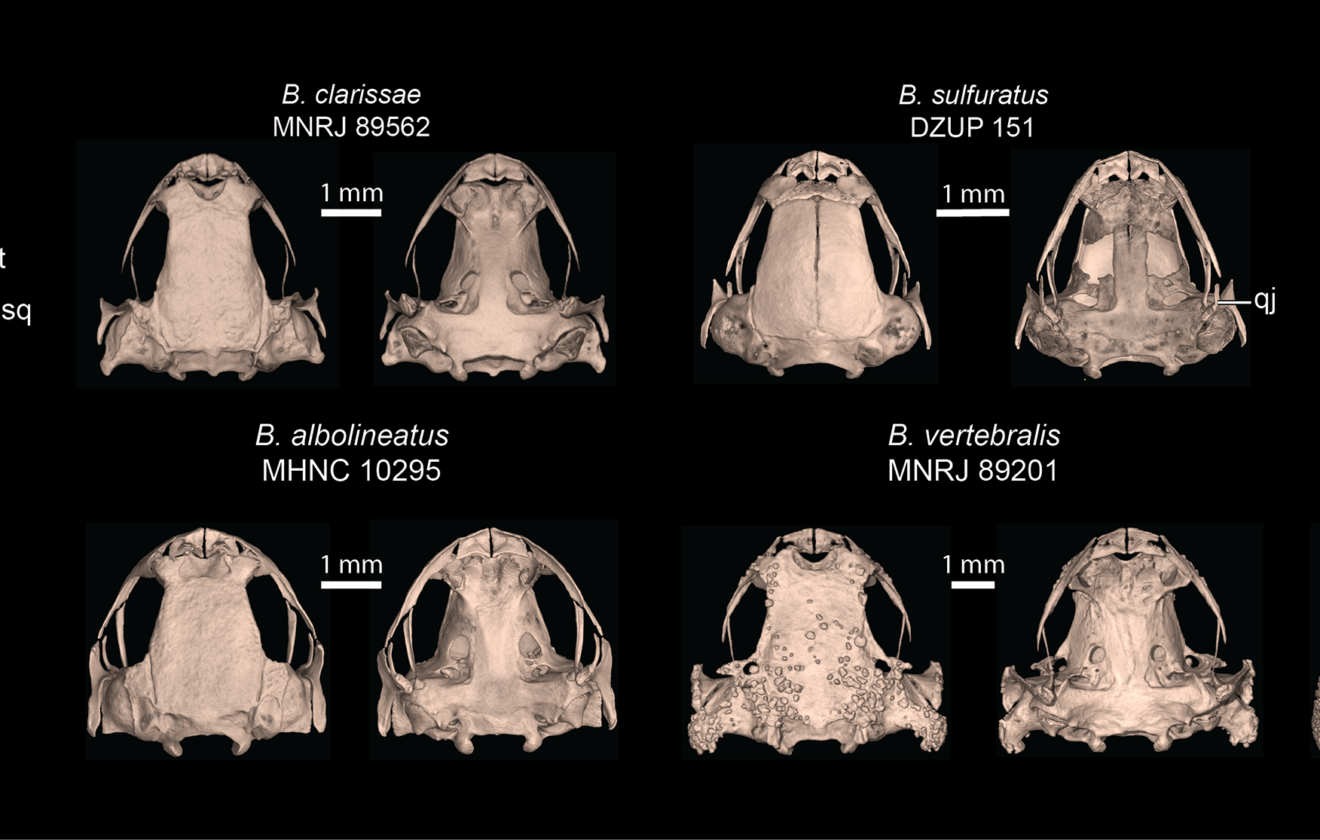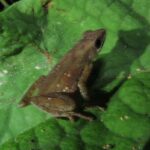Brachycephalus pernix: The Diminutive Wonder of Brazil’s Atlantic Forest#
In the lush, cloud-shrouded mountain ranges of Brazil’s Atlantic Rainforest, a creature smaller than your thumbnail thrives silently among moss-laden leaf litter. Just millimeters long, painted with spectacular patterns of vibrant orange and gold, the delicate Brachycephalus pernix leaves few indifferent. Known locally as the “sapinho-pingo-de-ouro” or “little golden-drop frog,” this enigmatic amphibian is not just one of nature’s exquisite miniatures—it holds a unique place in our understanding of biodiversity and evolutionary biology.
But beyond its size and dazzling hues lies a tale of evolutionary resilience, ecological significance, and an uncertain future, painting a clear reminder of the beauty and fragility of our planet’s ecosystems. Journey with us deep into the mist-bathed forests of southeastern Brazil, as we uncover the rich life history, vibrant biology, and conservation storyline of this tiny but extraordinary amphibian.
Taxonomy and Classification#
Brachycephalus pernix belongs to the family Brachycephalidae, a diverse lineage of miniature frogs commonly known as ‘pumpkin toadlets’ or ‘saddleback toads.’ The genus Brachycephalus is renowned worldwide for its remarkable small size and brightly colored representatives. First described formally in 1998, B. pernix quickly captured the attention of biologists and conservationists alike due to its striking appearance and very limited distribution.
The genus name “Brachycephalus” stems from Greek roots “brachy,” meaning short, and “kephalos,” meaning head, hinting at the distinctive body shapes adapted to their specialized microhabitats. Within this fascinating genus, B. pernix shares close lineage ties with species like Brachycephalus ephippium and B. vertebralis, absurdly tiny frogs equally captivating in their colors and adaptations.
Natural Habitat#
To find this diminutive marvel, one must venture to very specific elevations in the Brazilian Atlantic Rainforest, particularly in the montane cloud forests of Paraná State. Brachycephalus pernix thrives in cool, humid environments approximately 1,000 meters above sea level, concealed under leaf litter or delicately walking along moss-covered rocks. These settings provide an ideal microclimate—cool temperatures, abundant humidity, and sheltered nooks for refuge from predators, dehydration, and harsh conditions.
The cloud forests they inhabit are unique ecosystems shrouded by dense fog, fostering an environment rich in biodiversity with high endemism. Moist, decaying leaves and pads of lush moss carpets, studded with drops of dew, offer perfect camouflage conditions for a tiny organism that would otherwise stand out dramatically to potential predators. Without this specialized habitat, the survival of Brachycephalus pernix is uncertain—highlighting crucial connections among rainfall patterns, temperatures, vegetation type, and amphibian ecology.
Physical Characteristics#
Laying eyes upon Brachycephalus pernix for the first time is a breathtaking experience. Measuring around a mere 12-14 millimeters—a dimension that barely exceeds a human fingernail—its proportions astonish; head and body merge smoothly, giving this miniature frog a short, rounded appearance punctuated by diminutive limbs. Perhaps its most captivating feature, however, is its mesmerizing coloration, a bright shade of golden orange punctuated occasionally with darker hues or minute spots, turning each specimen into a living jewel of the forest floor.
This brilliant palette serves dual purposes—warning potential predators of their skin’s toxic alkaloids and providing camouflage among tangled leaves and vibrant fungi. Their skin secretes mildly toxic compounds, an adaptation to deter predation and fungal infections—a crucial survival mechanism for such diminutive, defenseless creatures. Although invisible to most predators at a glance, under ultraviolet light they fluoresce softly, adding another layer of biological wonder that continues to enthrall researchers.
Behavior and Life Cycle#
Feeding and Foraging#
Despite their small size and seemingly vulnerable stature, Brachycephalus pernix is an adept little predator, actively hunting tiny arthropods, springtails, mites, and minuscule insects among leaf litter. They forage by day, relying heavily on their acute senses—possessing sensitive visual and olfactory capabilities—to locate their nearly microscopic prey. Their meals must be small and swift, taking advantage of the abundance of tiny prey available in their remarkably biodiverse habitat.
Breeding and Development#
The life history of these frogs is particularly fascinating because of their unique reproductive strategy. While most frogs undergo a metamorphosis from aquatic tadpole stages into terrestrial adults, Brachycephalus pernix bypasses this entirely, displaying direct development. Females lay their eggs within moist leaf litter and guarded spaces; immediately upon hatching, miniature adult-like frogs emerge, skipping the aquatic larval stage altogether.
This adaptation greatly reduces vulnerability, as fragile tadpoles exposed in open waters would easily fall prey to predators. The trade-off of direct development, however, necessitates smaller clutch sizes, amplifying vulnerability due to environmental disturbances or habitat loss. The success of each new generation becomes tightly bounded to the stability of their forest ecosystem.
Ecological Role#
Though diminutive in stature, Brachycephalus pernix fulfills a vital niche within its ecosystem. By preying on invertebrate populations, this species helps keep trophic webs balanced, indirectly supporting forest floor decomposition and nutrient cycling. Likewise, these frogs themselves constitute a key source of food for larger arthropods, birds, and small mammals, emphasizing their integral role within the Atlantic Rainforest biodiversity.
Furthermore, as habitat specialists with precise climate and moisture tolerances, these frogs act as excellent bioindicators. Fluctuations in their numbers or habitat conditions can reveal early warnings about ecosystem health, giving conservationists an important tool for monitoring climate change and habitat degradation impacts over time.
Threats and Conservation Status#
Despite their adaptability and resilience, Brachycephalus pernix finds its future uncertain. Currently classified as “Data Deficient” by the International Union for Conservation of Nature (IUCN), this species is often overshadowed by more charismatic megafauna, making conservation prioritization challenging. However, their specialized habitats are highly vulnerable to anthropogenic threats. Habitat loss through logging, agriculture, or expanding urbanization poses monumental risks.
Furthermore, climate change triggers unpredictable shifts in rainfall and temperature in their sensitive cloud forest ecosystems—potentially catastrophic for Brachycephalus populations. Conservationists advocate strongly for protected areas to safeguard critical ecosystems supporting these minute ecological treasures. Continuous research coupled with outreach and education can greatly amplify conservation efforts, emphasizing the remarkable value harbored within tiny creatures like Brachycephalus pernix.
Cultural and Scientific Significance#
Beyond their intrinsic beauty, these frogs represent extraordinary examples of evolutionary adaptation to challenging ecological niches. Scientific insights from Brachycephalus pernix contribute to broader understanding of amphibian biology, environmental sensitivity, biochemistry, and evolutionary forces shaping biodiversity. Potential bioactive compounds from the frog’s toxin glands have sparked new avenues of biomedical research on pharmaceutical frontiers.
Furthermore, indigenous and local communities living nearby often hold these delicate frogs in reverence due to their striking appearance and enigmatic nature. Cultural respect and local community pride for endemic species can become strong catalysts for conservation involvement, showcasing a potent intersection between cultural heritage and ecological stewardship.
Conclusion#
Brachycephalus pernix quickly charms anyone privileged enough to learn about it—a marvel of adaptation standing testament to nature’s ingenuity. Yet the persistence of this tiny amphibian reminds us vividly of the interconnectedness and vulnerability of life within their fragile cloud forest environments. Ensuring their continued existence hinges upon conservation awareness, habitat protection efforts, and our collective dedication toward preserving the health and diversity of our ecosystems.
By advocating for these frogs and their habitats, we champion the broader tapestry of biodiversity, each strand—no matter how small—profoundly integral to our planet’s future. Let us embrace this diminutive wonder as both inspiration and a powerful beacon of hope for conservation action.








